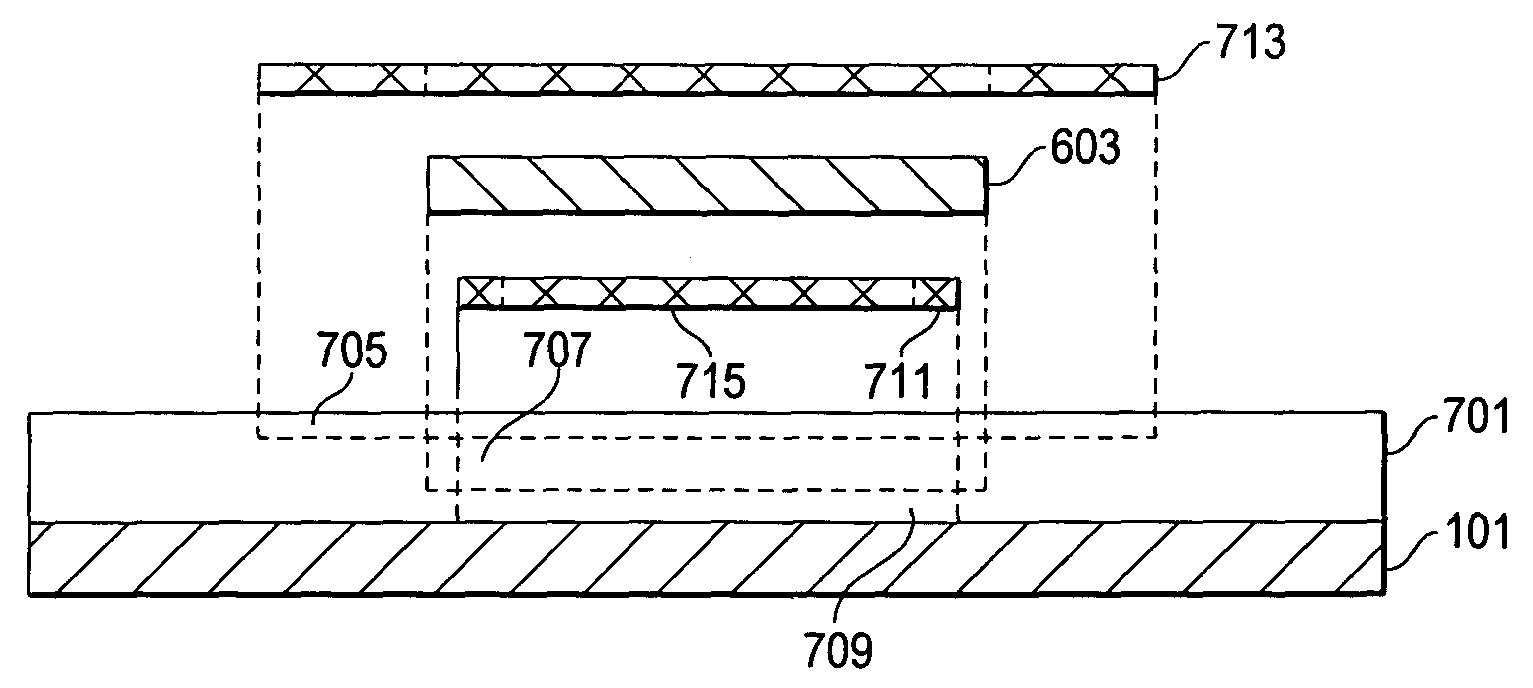Low profile carrier for non-wafer form device testing
a low-profile carrier and non-wafer-form technology, applied in the direction of testing circuits, resistance/reactance/impedence, instruments, etc., can solve the problems of easy displacement of location, poor die marking, and easy displacement of location in clearan
- Summary
- Abstract
- Description
- Claims
- Application Information
AI Technical Summary
Benefits of technology
Problems solved by technology
Method used
Image
Examples
Embodiment Construction
[0021] The present invention will now be described with reference to preferred embodiments thereof. FIG. 1 shows an exemplary embodiment of a low-profile carrier 100. The low-profile carrier generally includes a semiconductor wafer support 101, a test ring holder 103 with a first recess 105, a second recess 107, and an optional thru-hole 109, a test ring magnet 111, and a test ring cover 113. A non-wafer form device (e.g., an integrated circuit chip, a thin film head structure, one or more molded array packages, etc.—not shown) is placed between the test ring magnet 111 and is held in place by the test ring cover 113. The low-profile carrier with the mounted non-wafer form device may then be placed into, for example, a wafer boat to allow the non-wafer form device to be loaded by an automated test machine, such as a wafer-prober.
[0022] The semiconductor wafer support 101 serves as a mechanical support base for the test ring holder 103. Using a semiconductor wafer as a support base ...
PUM
 Login to View More
Login to View More Abstract
Description
Claims
Application Information
 Login to View More
Login to View More - R&D
- Intellectual Property
- Life Sciences
- Materials
- Tech Scout
- Unparalleled Data Quality
- Higher Quality Content
- 60% Fewer Hallucinations
Browse by: Latest US Patents, China's latest patents, Technical Efficacy Thesaurus, Application Domain, Technology Topic, Popular Technical Reports.
© 2025 PatSnap. All rights reserved.Legal|Privacy policy|Modern Slavery Act Transparency Statement|Sitemap|About US| Contact US: help@patsnap.com



